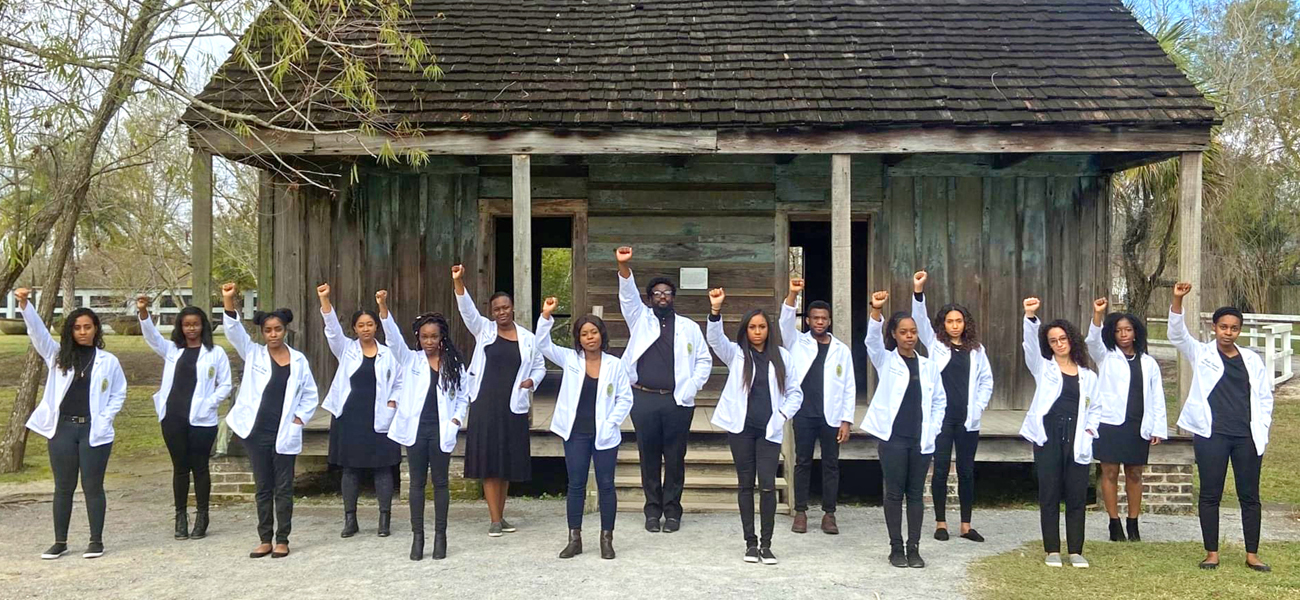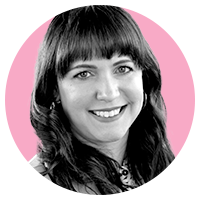
Inspiring future doctors
How a local medical student is leading the next global generation of students and health care workers
Russell Ledet told his story all over the news this summer. Ledet is a third-year student at Tulane University School of Medicine and is currently spending his rotations at Baton Rouge General Medical Center—which happens to be the same hospital where he worked as a security guard 10 years ago. The Southern University and New York University alum shared his journey with Good Morning America, CNN, The Washington Post, Southern Living and countless other publications. Now, he’s using his platform to combat racial disparities in the medical field.
—AS TOLD TO JENNIFER TORMO
Answers edited for clarity and brevity
What’s been the reaction to all the coverage your story has gotten?
It’s a whole lot of gratitude. I think what’s been most heartwarming is being recognized by old ladies at grocery stores. I was actually at a restaurant in Baton Rouge yesterday eating lunch, and this old man walked up to me. He was a Vietnam veteran, and of course, I’m a Navy veteran. He was like, ‘How does it feel to be a celebrity?’ And I said, ‘I just want to make people like you proud.’ And he said, ‘Young man … I tell my grandkids about you.’ So it’s that kind of thing that keeps me going. I think a part of the reason the press coverage has lasted so long—it started in July, and here we are in November—is because this is a genuine, heartwarming American story that doesn’t have any extra tangles or caveats. This is just me being me.
|
|
What do you love about the medical field and working in a hospital setting?
Being a clinician is the ultimate opportunity to be human. When a patient walks into the hospital, they’re telling you: ‘I am about to trust you with the one thing we can’t mess up. Because if we mess up, I don’t get another chance.’ You become a part of people’s lives, help them get better, and you protect their most priceless, precious entity. I never take it for granted.
How has the pandemic impacted your approach to medicine?

I try to sum it up in two parts. COVID-19 makes for a very new environment, where you can’t see a patient smile, and you’re weary of them taking off their mask. It’s harder because you can’t connect with or be as close with patients as you used to be. But the other thing always running through the back of my mind is the pandemic’s health disparities. I come from a small community in Lake Charles and now live in a small community in Gretna, and I’m seeing COVID-19 disproportionately affect communities I come from. It’s eye-opening to see the racial health disparities and recognize all the occupational, educational, wealth and housing gaps that have played a role in this reality. In a pandemic that is present for everyone, who has the highest risk of infection, hospitalization and death? It’s marginalized communities.
Your organization, the 15 White Coats, began with a viral photo of 15 Black medical students on the steps of Whitney Plantation. Now, you’re raising scholarship funds for medical students of color and inspiring the next generation. Tell us how the effort began.
It started as a conversation. My daughter and one of our very best friends, Dr. Phillip Thomas, visited Whitney Plantation. From the backseat, she said, ‘Dad, I finally understand why being a Black doctor in America is such a big deal. We just left a plantation, and back then, Black people were only allowed to be slaves. They couldn’t be doctors and lawyers or accountants. And here I am now, riding in the car with two doctors. We’ve come a long way.’ I thought, ‘There’s a whole lot of people in this world who should have this perspective.’ And just as far as we’ve come, we have a long way to go. After we did the photo shoot, we decided to blow it up into poster-size and distribute it for free to 5,000 classrooms worldwide. The photo has now gone as far as Scotland, Lithuania, Kenya, South Africa, England, South America and Central America.
What kind of messages have you received about 15 White Coats?
I’ve been told a million times over: ‘You all don’t know how important this work is. You won’t understand it until you’re like 67 years old. You are changing the minds of young people.’ And it’s not just young people from marginalized communities. There are two sides of the coin. A kid from a non-marginalized community might not have the perception that somebody from a marginalized community can become a doctor. The other side of that is: The person from the marginalized community also has that same viewpoint. I read 2,000 books before I graduated high school and didn’t know I could go to college for free. No one told me that. You don’t know what you’re capable of if no one tells you what’s possible. The world was so enamored by these photos because the world doesn’t see that many Black people in white coats on a regular basis. But that should be the norm. We need the kids from marginalized and non-marginalized communities to see that, because my colleagues and classmates right now didn’t grow up with that backdrop.
Now that you have this momentum, what’s next?
I plan on becoming a triple-boarded psychiatrist. I’ll be a pediatrician, a general psychiatrist, and a child and adolescent psychiatrist, with the hopes of opening a mental health services center in New Orleans. I think the child mental health space needs some bolstering in Louisiana. And I don’t mind being the person to do that, because I don’t shy away from challenges. The second thing for us is how we contribute to the pipeline, so that these kids not only think they can become physicians, but they leave high school with tools to position them to succeed in college and get through medical school. Building a high school [aimed at starting this training] would be the best way for us to do that. Opening a new high school will be challenging, but doesn’t mean that it’s impossible. It will be part of our history at some point. the15whitecoats.org
This article was originally published in the December 2020 issue of 225 magazine.
|
|
|

